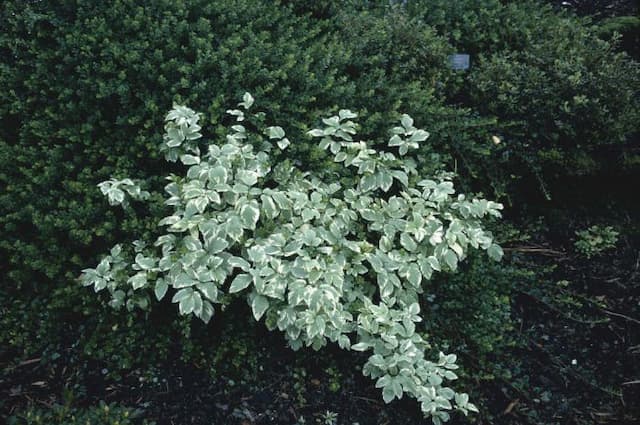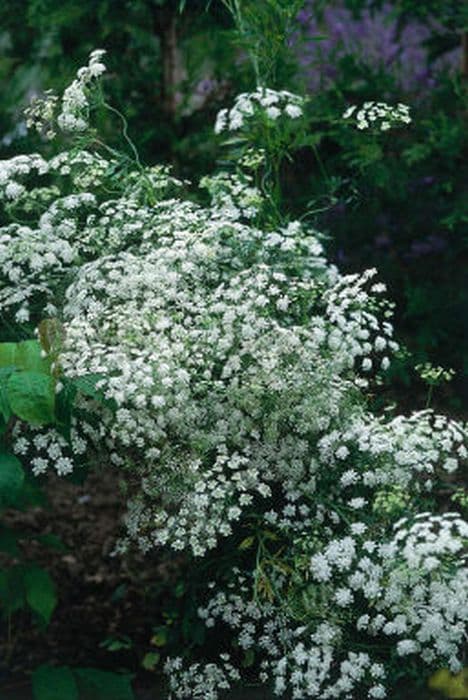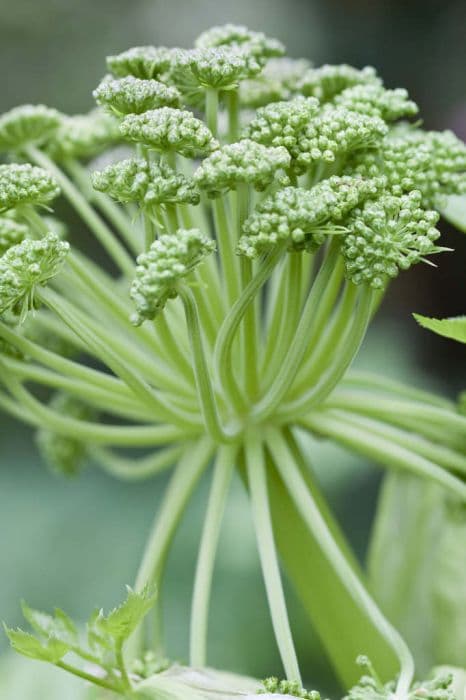Sea Holly Eryngium 'Cobalt Star'

ABOUT
Eryngium 'Cobalt Star', commonly known as Sea Holly, exhibits a striking and unique appearance. This plant boasts spiky leaves with a silvery-blue hue and veined texture, radiating an almost metallic luster. The foliage forms a rosette at the base, creating an intricate and dense cluster of serrated leaves. Rising above the foliage, the Sea Holly produces prominent, cone-shaped flower heads that are surrounded by a spiky ruff of bracts, which share the same arresting cobalt-blue color. These blossoms are favored for their ornamental quality and long-lasting nature, both in the garden and when used as cut flowers in bouquets. The overall impression of Sea Holly 'Cobalt Star' is one of dramatic color and texture, with its spiny silhouette adding architectural interest to any garden setting. The plant's distinct color palette and structural form make it a standout addition that complements a variety of garden styles.
About this plant
 Names
NamesFamily
Apiaceae
Synonyms
Cobalt Star Sea Holly, Cobalt Star Eryngo
Common names
Eryngium 'Cobalt Star'
 Toxicity
ToxicityTo humans
Eryngium 'Cobalt Star', commonly known as sea holly, is not known to be toxic to humans. Ingesting any part of this plant typically does not result in poisoning or adverse health consequences.
To pets
Sea holly is not considered toxic to pets. It is unlikely that ingestion of any part of the plant will cause symptoms of poisoning or serious health issues in animals. However, individual pets may have different sensitivities, and as with any non-food plant, ingestion could potentially lead to mild gastrointestinal upset.
 Characteristics
CharacteristicsLife cycle
Perennials
Foliage type
Deciduous
Color of leaves
Green
Flower color
Blue
Height
2-4 feet (60-120 cm)
Spread
1-2 feet (30-60 cm)
Plant type
Herb
Hardiness zones
5
Native area
Mediterranean
Benefits
 General Benefits
General Benefits- Attracts Pollinators: Eryngium 'Cobalt Star', commonly known as Sea Holly, is attractive to bees and butterflies, which are important for the pollination of many other plants.
- Drought Tolerance: Sea Holly is highly drought-resistant, making it suitable for xeriscaping or gardens in arid climates.
- Low Maintenance: It requires minimal care once established, making it an excellent choice for gardeners looking for low-maintenance plants.
- Unique Appearance: With its striking blue flowers and spiny leaves, Sea Holly adds an unusual and dramatic touch to any garden.
- Long Blooming Period: The plant has a long flowering season, providing color and interest from mid-summer to early fall.
- Cut Flower: Sea Holly makes an excellent cut flower, lasting a long time in a vase and adding a unique texture to floral arrangements.
- Deer Resistance: It is rarely damaged by deer, which makes it an excellent choice for areas where deer browsing is a problem.
- Salt Tolerance: Sea Holly is salt-tolerant, which makes it suitable for coastal areas where salt spray can be an issue for many plants.
- Structural Plant: Its architectural form works well as a focal point in a garden or as part of a mixed border.
- Versatile Usage: The plant's adaptability allows it to be used in various garden styles – from cottage gardens to modern minimalist landscapes.
 Medical Properties
Medical PropertiesThis plant is not used for medical purposes.
 Air-purifying Qualities
Air-purifying QualitiesThis plant is not specifically known for air purifying qualities.
 Other Uses
Other Uses- Eryngium 'Cobalt Star', or sea holly, can be used as a natural dye for fabrics, offering a range of colors from greens to blues dependent on the mordant used.
- The spiky texture of sea holly makes it an effective addition to physical barriers in gardens designed to deter animals and trespassers.
- Due to its unique appearance, sea holly can be included in artistic installations or used as inspiration for sculpture and other forms of visual art.
- Sea holly's stiff structure allows it to be used in building miniature models or as part of decorative craft projects.
- The thorny and robust stems of sea holly can be used in creating natural floral arrangements that require less frequent water changes.
- Sea holly can be planted in coastal areas as it is tolerant of salt spray, making it useful for beachside erosion control and landscape stabilization.
- Dried sea holly flowers can act as organic jewelry components, being incorporated into necklaces or earrings.
- The enduring nature of sea holly blooms makes them suitable for used in long-lasting wreaths or dried floral displays.
- Sea holly can be utilized in theme gardens that aim to evoke a sense of the medieval or the mystical due to its lance-like foliage and armor-plated look.
- Some cultures may use dried sea holly as a component in sachets or potpourri for its textured appearance rather than scent.
Interesting Facts
 Feng Shui
Feng ShuiThe Sea Holly is not used in Feng Shui practice.
 Zodiac Sign Compitability
Zodiac Sign CompitabilityThe Sea Holly is not used in astrology practice.
 Plant Symbolism
Plant Symbolism- Determination - Eryngium 'Cobalt Star', more commonly known as Sea Holly, often symbolizes a strong will and determination. Its hardy nature and thistle-like appearance can represent an ability to persist despite challenges.
- Independence - Sea Holly's ability to thrive in poor soil and coastal conditions reflects qualities of self-reliance and independence.
- Attraction and allure - The striking blue color and unique shape of Sea Holly flowers can signify attraction and allure, making it a symbol of fascination and intrigue.
- Protection - Historically, thistle-like plants like Sea Holly were believed to have protective qualities, hence it can symbolize defense and protection.
 Water
WaterSea holly, including the variety 'Cobalt Star', should be watered deeply but infrequently once established, mimicking its natural preference for dry conditions. During the growing season, water the plant with approximately 1-2 gallons per week, depending on the climate and weather conditions. Always check the soil before watering; it should be dry an inch below the surface. In hot, dry periods, increase watering slightly but be cautious not to overwater, as sea holly is drought-tolerant and does not like soggy soil. Reduce watering in the winter when the plant is dormant.
 Light
LightThe 'Cobalt Star' sea holly thrives best in full sun, where it can receive at least six hours of direct sunlight daily. This plant prefers a spot that is bright and exposed to ensure healthy growth and vibrant flower coloration. Avoid planting sea holly in shaded areas, as this can lead to poor flowering and a weakened plant.
 Temperature
TemperatureSea holly, or 'Cobalt Star', prefers a temperature range between 60 and 80 degrees Fahrenheit for optimal growth. It can tolerate temperatures as low as 20 degrees Fahrenheit, making it hardy in cooler climates. However, it is not well-suited to areas where the temperature regularly exceeds 90 degrees Fahrenheit, as extreme heat can affect its health and flowering.
 Pruning
PruningPruning sea holly, or 'Cobalt Star', helps maintain its shape and encourage new growth. Prune dead or faded flowers during the summer to promote a second bloom. In late fall or early winter, cut back the entire plant to just above the ground to prepare it for the next growing season. The best time for major pruning is when the plant is dormant.
 Cleaning
CleaningAs needed
 Soil
SoilSea Holly 'Cobalt Star' thrives in well-draining soil mixed with sand or gravel for added drainage; aim for a pH range of 6.0 to 7.5.
 Repotting
RepottingThe Sea Holly 'Cobalt Star' generally requires repotting every 2-3 years, or when it outgrows its current container.
 Humidity & Misting
Humidity & MistingSea Holly 'Cobalt Star' prefers moderate humidity levels but is adaptable to a range of conditions.
 Suitable locations
Suitable locationsIndoor
Place Sea Holly 'Cobalt Star' in bright light inside; ensure good air flow.
Outdoor
Plant Sea Holly 'Cobalt Star' in full sun; well-drained soil.
Hardiness zone
5-9 USDA
 Life cycle
Life cycleThe Eryngium 'Cobalt Star', commonly known as Sea Holly, begins its life cycle as a seed, which when sown, germinates in a moist, well-drained substrate. After sprouting, the seedling grows into a rosette of basal leaves during its first growing season, focusing on root development. In the second year, the plant matures and elongates its stem, producing highly distinctive, thistle-like blue or purple flowers during the summer. Following the flowering stage, Sea Holly undergoes pollination, primarily by bees and butterflies, which leads to the production of seeds. The plant then enters a phase of senescence where it will die back in fall after seed dispersal, withering if it is grown as an annual. However, as a perennial in appropriate climates, it will enter dormancy over the winter and regrow from the same root system in the spring.
 Propogation
PropogationPropogation time
Spring to Early Summer
Eryngium 'Cobalt Star', commonly known as Sea Holly, is most commonly propagated through seed. The best time to sow seeds is in late winter to early spring, generally around February to April. To propagate, fill a seed tray with a well-draining soil mix and sprinkle the seeds on top, then lightly cover them with soil. The tray should be kept moist and in a light, warm place until germination occurs, which typically takes 2-3 weeks. Once seedlings are large enough to handle, they can be transplanted into individual pots and eventually moved outdoors after the risk of frost has passed.









